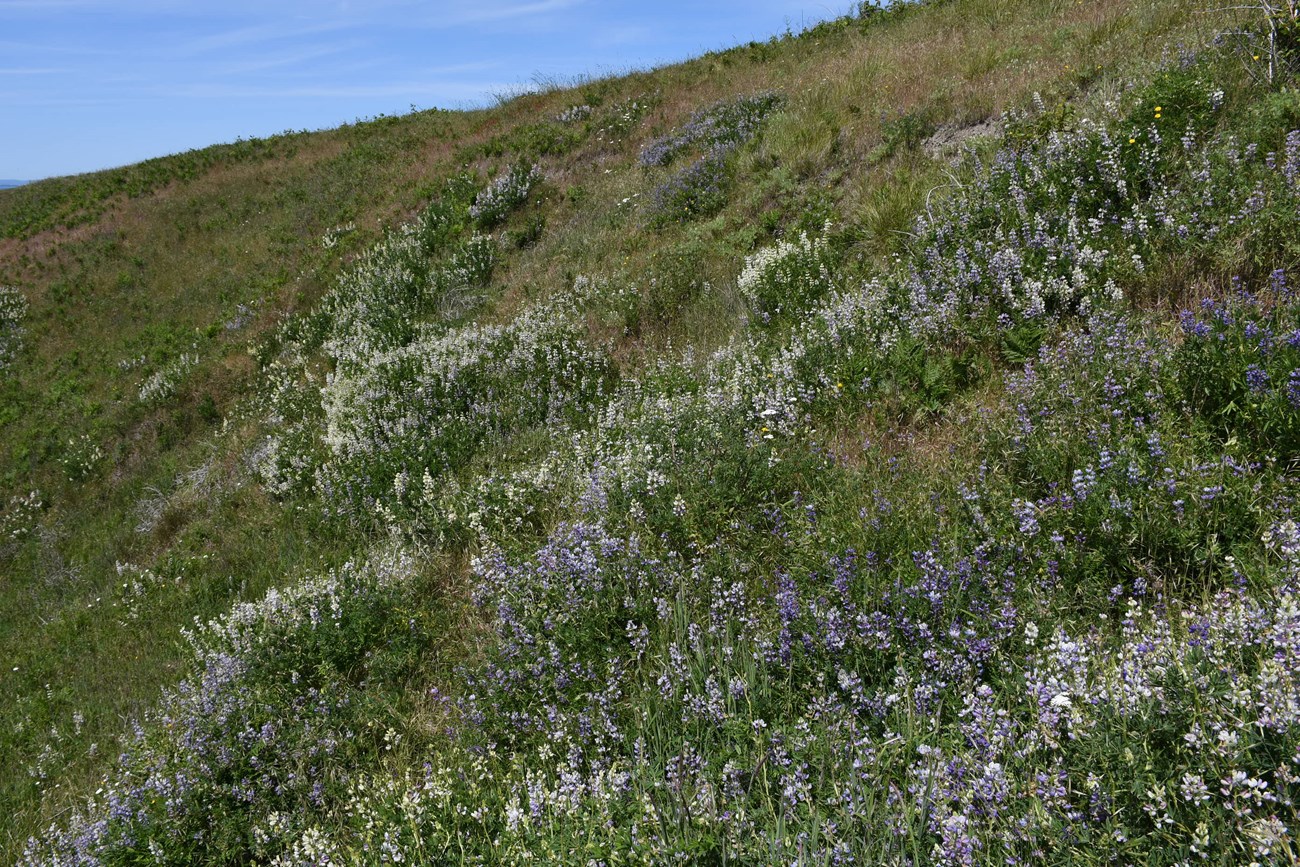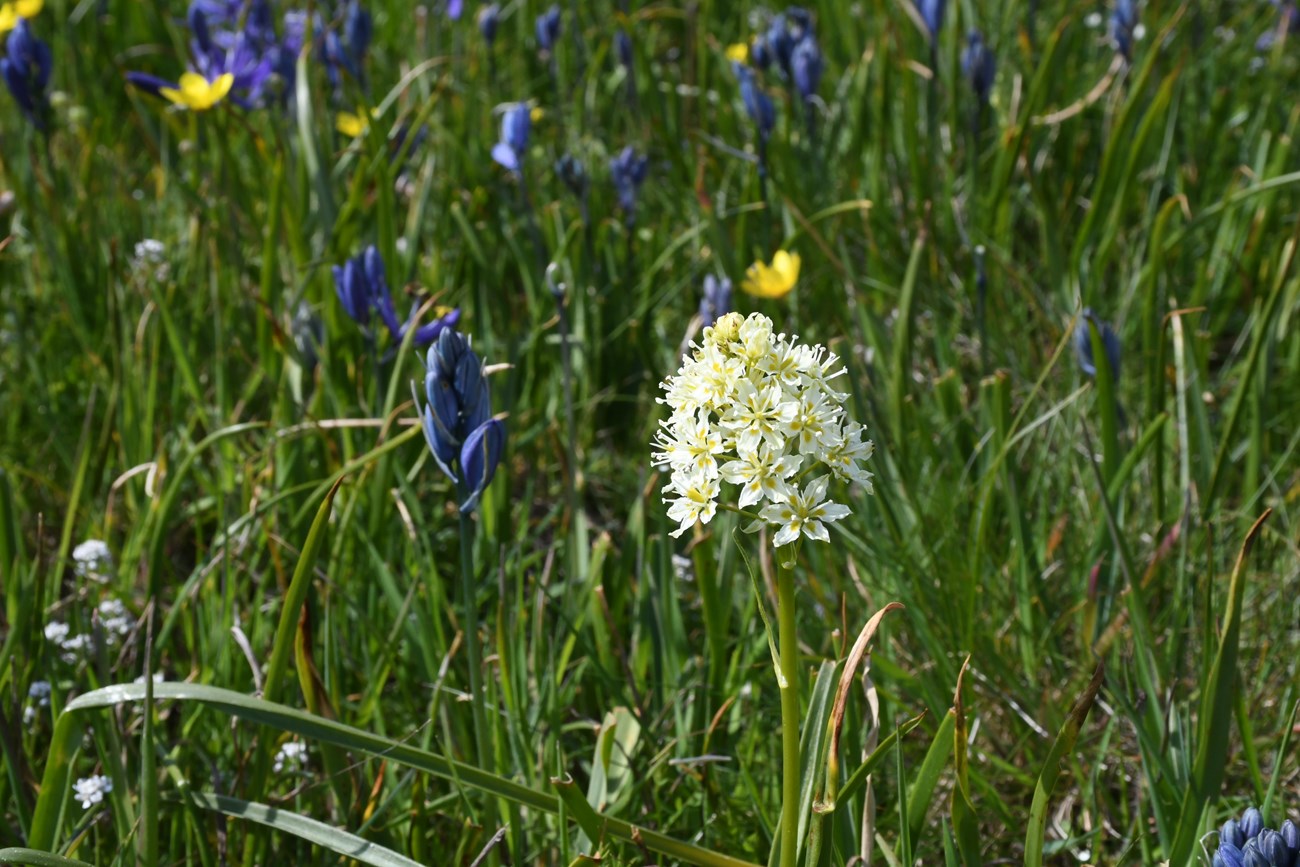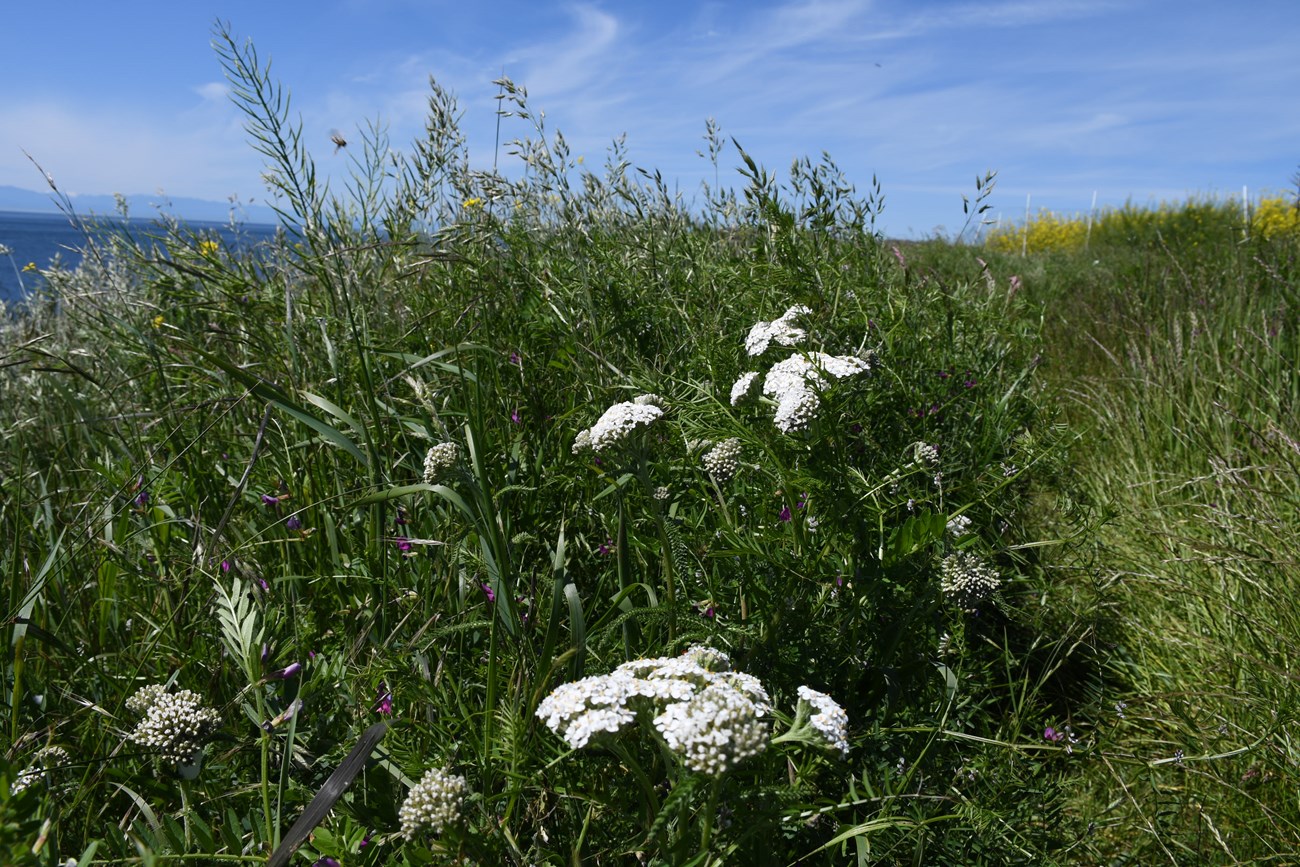
NPS The prairies in American Camp are some of the last surviving native prairies in Washington, constituting only 3% of its original extent. Of the roughly 700 acres of American Camp considered prairie "grasslands", most are dominated by invasive grasses and plants. Only about 30 acres of these grasslands can be considered a true native prairie. This includes portions of remnant prairie at English Camp near Young Hill. Prairies are integral to the history of the park. For millennia, Coast Salish people maintained the prairies and encouraged the growth of native plants used for food and medicine. Within the last 200 years, prairie habitat within the park was altered by historic Euro-American farming and ranching. The newly enforced lack of fire changed the overall structure of the prairie and introduced many non-native plants. Despite these setbacks, the American Camp prairie and grasslands are still home to a wide array of native plants and rare and unique animal species, such as the endangered island marble butterfly (Euchloe ausonides insulanus) and several varieties of camas. Plants such non-native grasses, Canada thistle, Himalayan blackberry, and encroaching woody species make it hard for native plant species to thrive. Park staff continually survey the prairie, mapping new and problematic invasives. Over 200 person hours are devoted per year to remove invasive plants and control small conifers that continually encroach into the prairie. To help keep new invasive plants out of San Juan Island, make sure to check your shoes and vehicle tires for hitchhiking seeds before entering the park— (especially if you’ve been in areas where invasive plants are known to occur). 
NPS 
NPS |
Last updated: August 12, 2022
